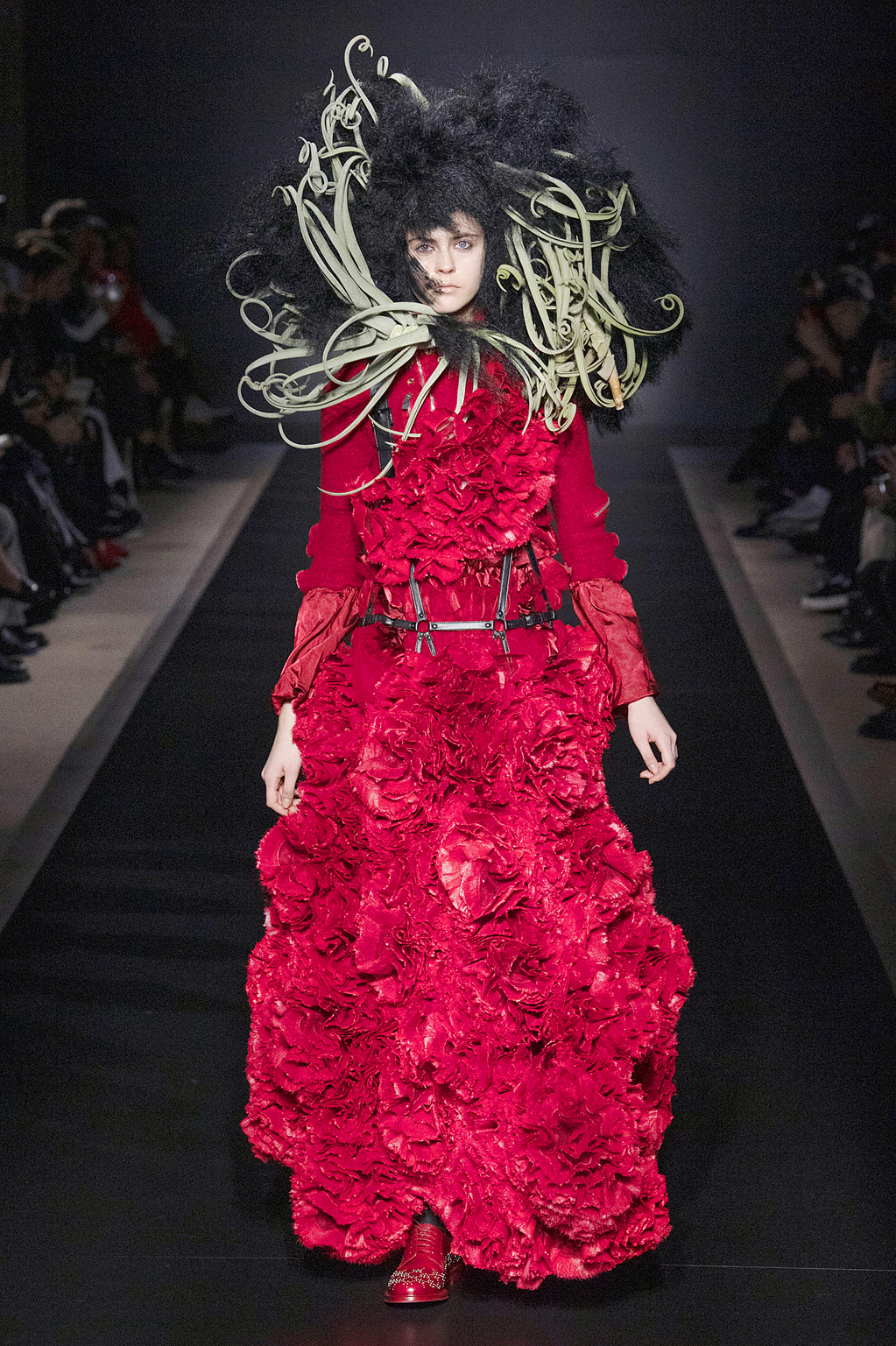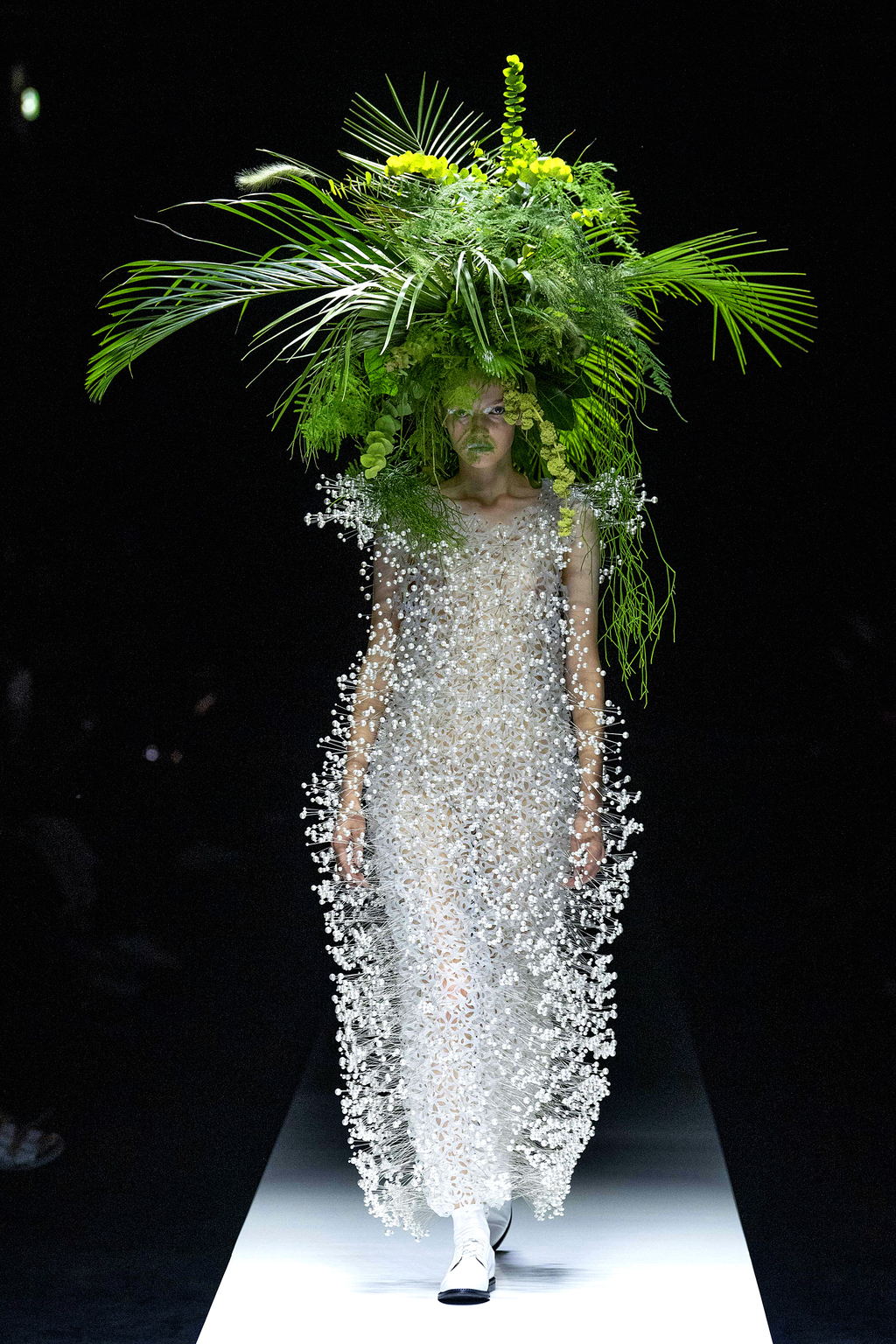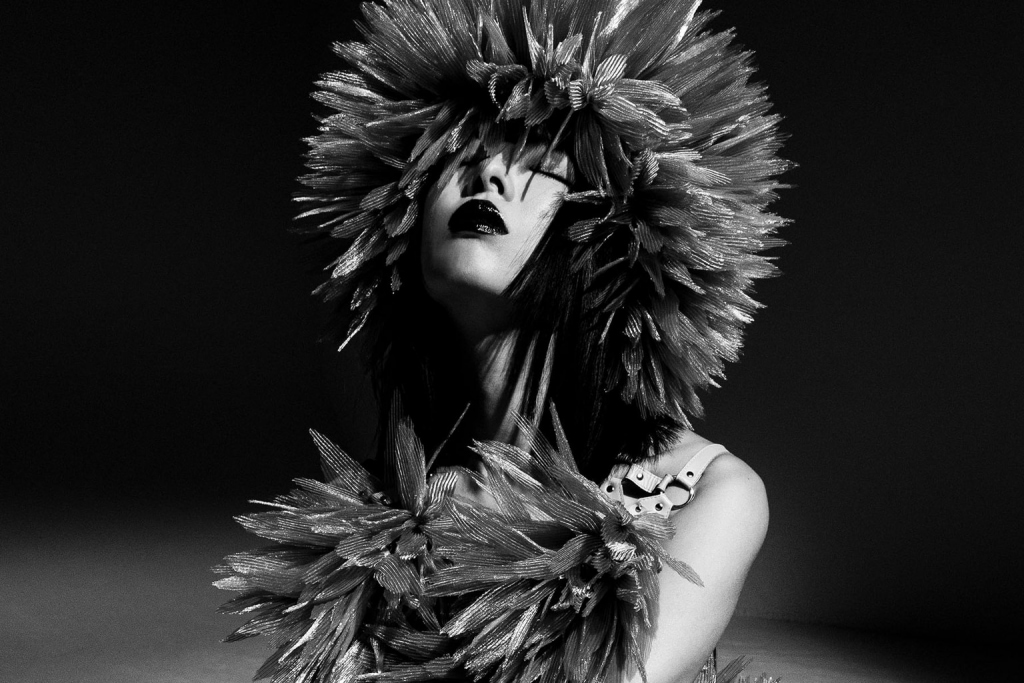I don’t remember exactly when I first saw the work of Kei Ninomiya. But I do recall feeling it was like witnessing a thousand foundry fires up close, with the heat burning my cheeks and a flindrikin of this aesthetic ash dropping lightly upon me. Ninomiya’s brand Noir Kei Ninomiya, which operates under the truly iconic Japanese Comme des Garçons group, has natural similarities with his mentor and Comme des Garçons designer and founder Rei Kawakubo.
The thumbprints of Kawakubo were certainly there but, at first, Noir Kei Ninomiya felt unknown to me, unexplored, exciting and new and pushed the boundaries of what fashion actually is about. Was it architecture? Was it costumes for the stage? And perhaps, most importantly, was it art? And by that, I realized that I was asking myself if all fashion was therefore art?
Beauty in Imperfection
The history of Comme des Garçons spans over 50 years and, since its inception in 1969, it has become one of the most recognizable and respected fashion brands. It has stores all over the globe and an array of lines and accessories which have captivated a legion of devotees who love fashion but opt for the ideal that there is beauty in imperfection. Nothing is ever as it seems with Comme des Garçons. Hems are sometimes left incomplete. The silhouette is often left deliberately askew. And in the earlier collections, Kawakubo even incorporated holes into the garments.

Noir Kei Ninomiya SS2022, photo by Allan Abani
Kawakubo, one of the most acclaimed living fashion designers, has built and nourished a company and spectrum of labels which pushes the concept of fashion and asks questions of the wearer and of those that see from the outside. In an academic essay Professor Sylvia Lavin of Princeton University posited the question, that made me even more fascinated in fashion, that wearing Comme des Garçons actually changes the space in which you inhabit. Just think about that for a minute.
Alongside other designers who work under the Comme des Garçons umbrella including the superb Junya Watanabe, Ninomiya has been nurtured and guided by Kawakubo since joining the company in 2008. After a few years working under Watanabe, the Oita-born designer and graduate in French Literature from Aoyama Gakuin, was given his own line in 2014 by Kawakubo. He has since positioned himself as one of the fashion industry’s most innovative and intriguing designers.
A Groundbreaking Designer
An intensely private, quiet and humble person, replete with a truly brilliant jet-black mohawk, Ninomiya doesn’t particularly like to talk about himself or his background. He seems to be more comfortable in the present. As we talk, on a rainy cold January afternoon at the Comme des Garçons headquarters in Aoyama, he sits across from me in casual clothes with a charming smile on his face and his latest collection hanging on the rails behind him.
Ninomiya’s collection for Spring/Summer 2022 was recently shown at the company’s showroom in Tokyo and it’s fair to say it was groundbreaking. As critic Luke Leitch wrote in Vogue, “he [Ninomiya] expressed his notion of black’s shadow by creating a series of pieces in beige. The idea of something casting a paler shadow than itself implied a reversed polarity of some kind, and the paler procession of pieces did indeed mostly cover the still-breathtaking territory we have seen Ninomiya explore before.”
With the word “Noir” in the brand’s name it comes as no surprise that the designer is fond of the color black. Much like his mentor Kawakubo, black plays and acts like a leitmotif throughout his oeuvre. When asked about what inspires his collections, Ninomiya says, “It depends on the collection. It’s hard to explain, but it’s usually just due to my feelings at the time or wanting to try out a new technique. If anything, I don’t think of a theme in the beginning, I make a lot of different designs and see how they can come together.”

Noir Kei Ninomiya SS2022, photo by Allan Abani
When probed more, Ninomiya cuts down the notion of being inspired by other artforms or current global situations, almost suggesting that he creates in an artistic vacuum inside his mind. And if you research his collections from the beginning, it’s hard to find a recognizable through line. Every collection has its own soul, its own meaning which reflects his mentor Kawakubo’s practice of erasing and starting again with every season. This approach mirrors critic Harold Koda’s thoughts in an essay about Kawakubo, “If to start from zero was how Kawakubo described her epiphany, it has become a constant of her design process. Season after season, collection after collection, Kawakubo obliterates her past.”
As we talk, in the beginning of the third year of the pandemic, I need to ask Ninomiya if it has had any particular effect on his creativity or his brand. “Though there have been changes within the company and with other vendors, my work itself hasn’t changed much,” he says. “As for positive things, the pandemic showed me the determination of my team and that they are willing to maintain their drive to create.”
And when I ask about his working relationship with Kawakubo, and what kind of input she has regarding his work, the mild-mannered designer comments shyly, “When it comes to creation, I usually don’t really share my collection until the day of our show. However, if there is a large-scale job or collaboration with say another fashion house, I will get her approval.”
This is something that recurs with current designers such as Watanabe and Ninomiya that work under the Comme des Garçons group. Kawakubo instinctively trusts them enough to create on their own with minimal comment from her. It’s like a parent letting their children fly the nest. She nurtured their abilities, giving them enough confidence to fend for themselves.

Noir Kei Ninomiya FW20/21
A Valuable Apprenticeship
Every collection is a fresh canvas, an attempt to start from the beginning, to provoke and to reimagine an internal world in a series of tangible and artistic augenblicke. When you frame Ninomiya and his designs through the idea that he has trained under Kawakubo, it reinforces the concept of seniority and apprenticeship in Japan, something which has been happening for centuries. This system of minarai (apprenticeship) runs through the fabric of Japanese society and can be seen in the country’s vast network of artisans and the wider notion of monozukuri (craftsmanship).
From sword makers and chefs to dancers and farmers, there are a host of apprentices watching and learning, ready to be passed the mantle and ready to forge on themselves one day. So, it comes as no big surprise, then, that Kawakubo has instilled a similar system in her company. Join, train, watch, feel, understand and then, perhaps, you are given the chance to create under your own name under the Comme des Garçons umbrella.
“First off, I have always liked making things and I have always thought it is important to express my life’s experiences,” the Oita native comments. “Because of this I have chosen to do fashion as my full-time profession. Of course, I like literature and culture, but I fell in love with Rei Kawakubo’s designs and wanted to work alongside her. At the time I was still a college student, but I realized that not only did she value business, but also creating things, as I did as well. Our similar values made me want to work with her.”

Noir Kei Ninomiya SS2020
Ninomiya is very much his own man and an accomplished designer in his own right. Innovative and involved in expanding his artistic capacity with every collection, he continues on designing, establishing and navigating his own world and creative outlook. Ultimately, however, he has inherited Kawakubo’s deep-seated philosophy of breaking rules and challenging the very notions that define fashion and clothing.
It’s the slight push towards wabi-sabi, the use of space, the aesthetic emptiness involved and the nihilation which French philosopher Jean-Paul Sartre describes as “fluctuating between being and nothingness” that’s central to the brand’s ethos. Every time I step across the threshold of a Comme des Garçons store in Tokyo I experience a philosophical gap, a caesura where I take a breath, look and feel a negation, the start and end on one masterful and simultaneous loop.
Keep up with Noir Kei Ninomiya on Instagram.









